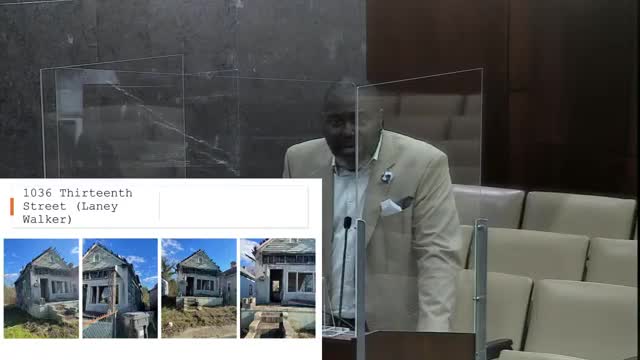Land bank initiative transforms blighted neighborhoods into thriving communities
August 09, 2024 | Augusta City, Richmond County, Georgia
This article was created by AI summarizing key points discussed. AI makes mistakes, so for full details and context, please refer to the video of the full meeting. Please report any errors so we can fix them. Report an error »

In a recent government meeting, officials highlighted significant progress in revitalizing urban areas through the collaboration of the Land Bank Authority and local developers. The discussions centered on the successful Laney Walker Bethlehem revitalization project, which was made possible by bond financing and the strategic acquisition of vacant properties. The Land Bank's role in addressing issues of blight and abandonment was emphasized, with officials noting that without their intervention, many projects would not have succeeded.
The meeting underscored the importance of balancing market-rate housing with affordable and workforce housing. Officials reported that efforts to clear blighted properties have led to a reduction in crime and an increase in community investment. The Land Bank has been proactive in acquiring properties through various means, including tax sales and donations, and is now focusing on demolishing dilapidated structures to make way for new development.
A notable achievement discussed was the establishment of a tiny house project aimed at combating homelessness, facilitated by the Land Bank's collaboration with local nonprofits. Additionally, the board's decision to foreclose on a property for a respite center was highlighted as a critical step in addressing housing instability.
The meeting also addressed the ongoing affordable housing crisis, with officials stressing that solutions must extend beyond government subsidies. Partnerships with organizations like the Neighborhood Assistance Corporation of America (NACA) were announced, aiming to provide below-market financing options to stimulate development.
Overall, the meeting showcased a commitment to innovative solutions in urban development, emphasizing the need for collaboration between government, private investors, and community organizations to create sustainable housing solutions.
The meeting underscored the importance of balancing market-rate housing with affordable and workforce housing. Officials reported that efforts to clear blighted properties have led to a reduction in crime and an increase in community investment. The Land Bank has been proactive in acquiring properties through various means, including tax sales and donations, and is now focusing on demolishing dilapidated structures to make way for new development.
A notable achievement discussed was the establishment of a tiny house project aimed at combating homelessness, facilitated by the Land Bank's collaboration with local nonprofits. Additionally, the board's decision to foreclose on a property for a respite center was highlighted as a critical step in addressing housing instability.
The meeting also addressed the ongoing affordable housing crisis, with officials stressing that solutions must extend beyond government subsidies. Partnerships with organizations like the Neighborhood Assistance Corporation of America (NACA) were announced, aiming to provide below-market financing options to stimulate development.
Overall, the meeting showcased a commitment to innovative solutions in urban development, emphasizing the need for collaboration between government, private investors, and community organizations to create sustainable housing solutions.
View full meeting
This article is based on a recent meeting—watch the full video and explore the complete transcript for deeper insights into the discussion.
View full meeting
